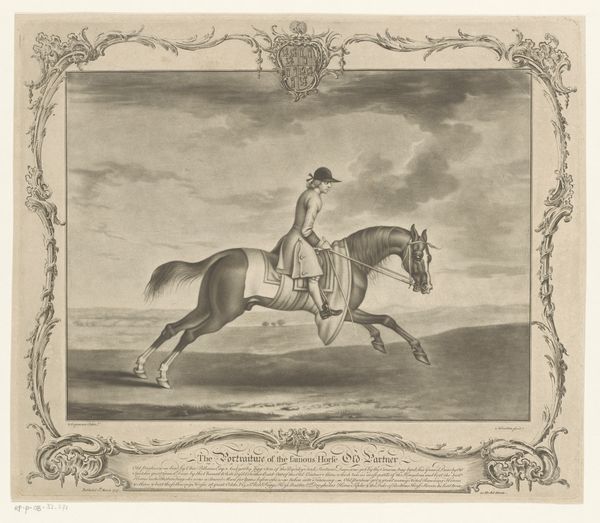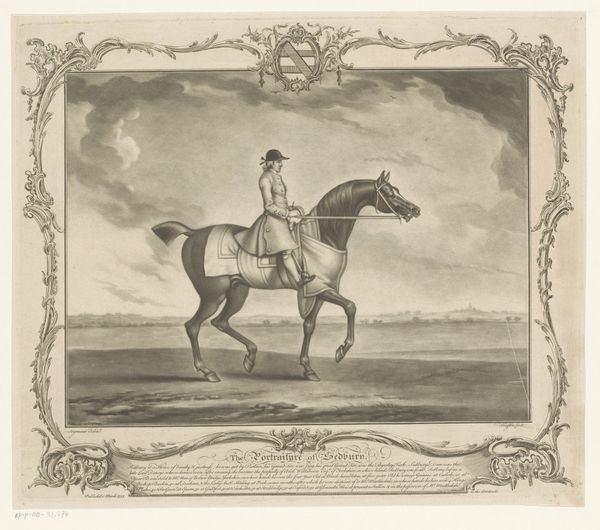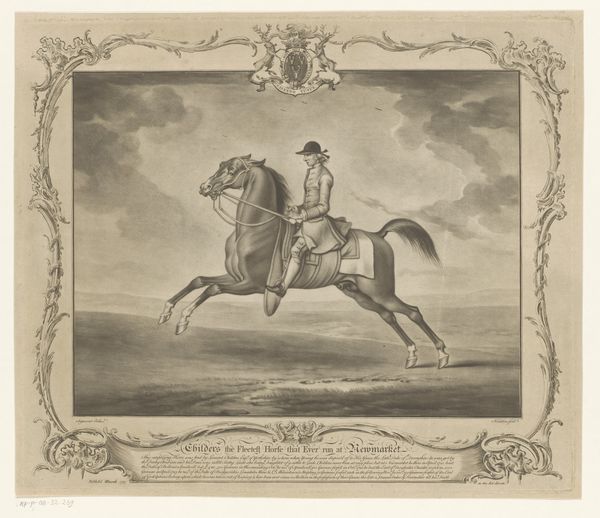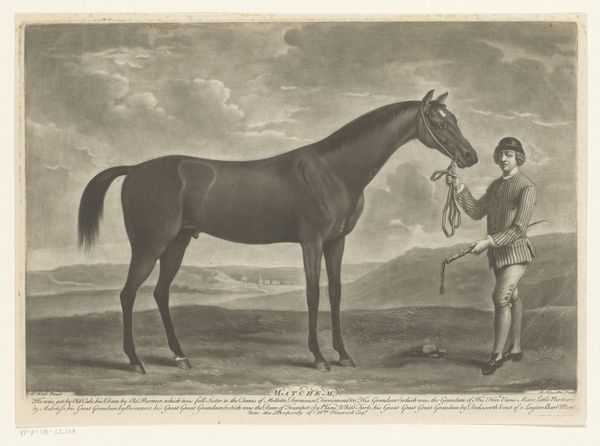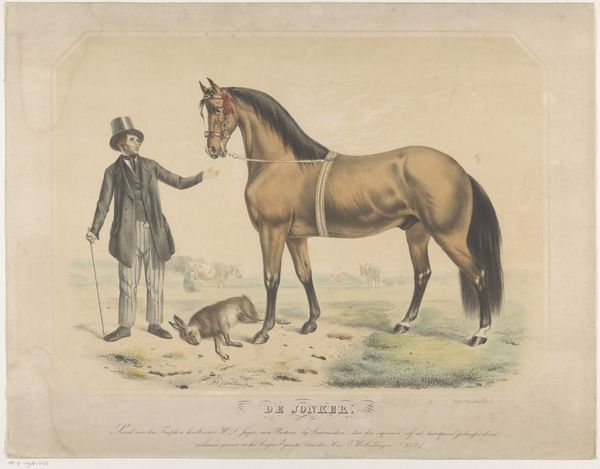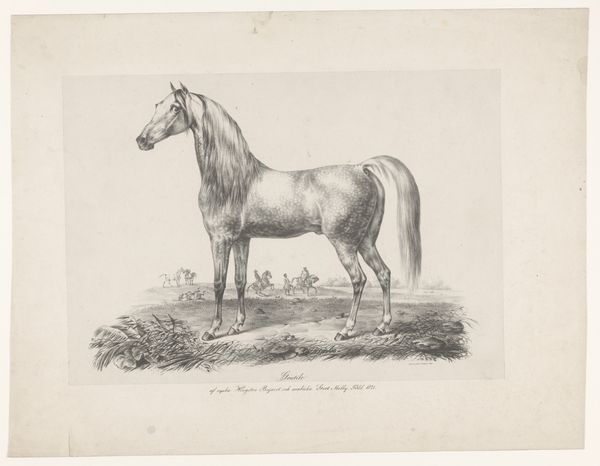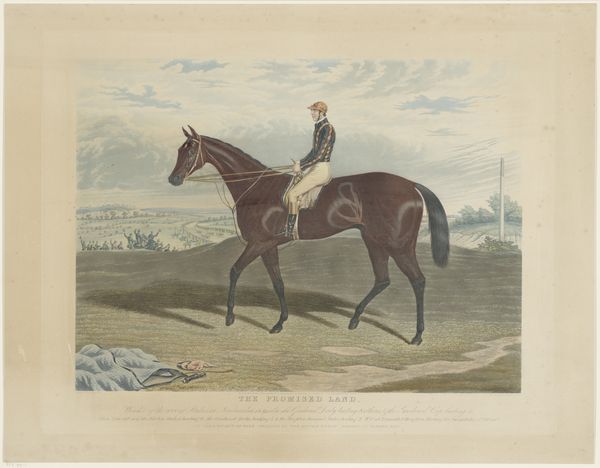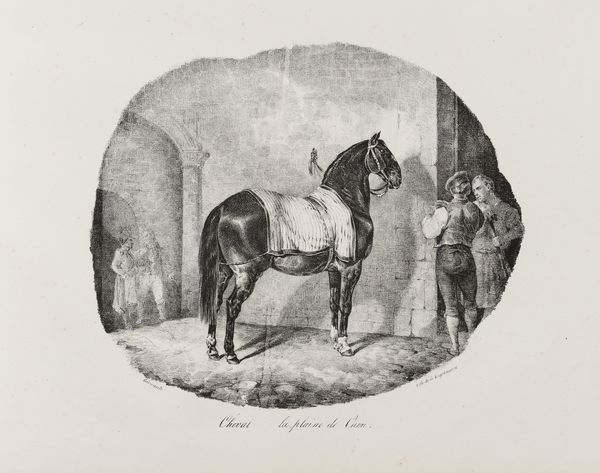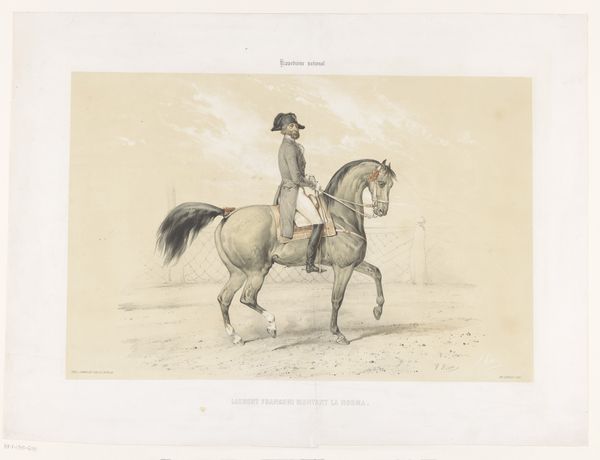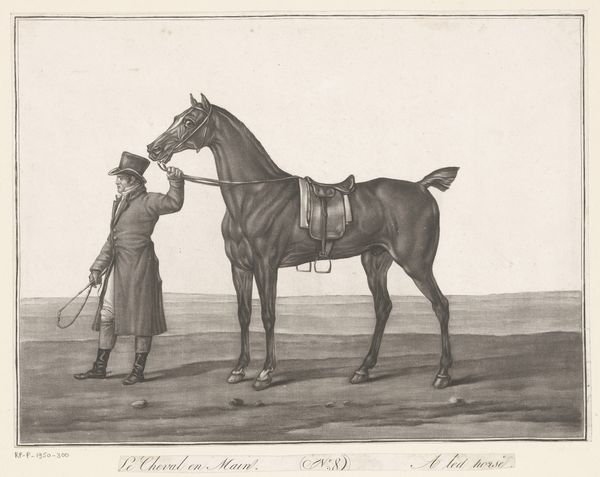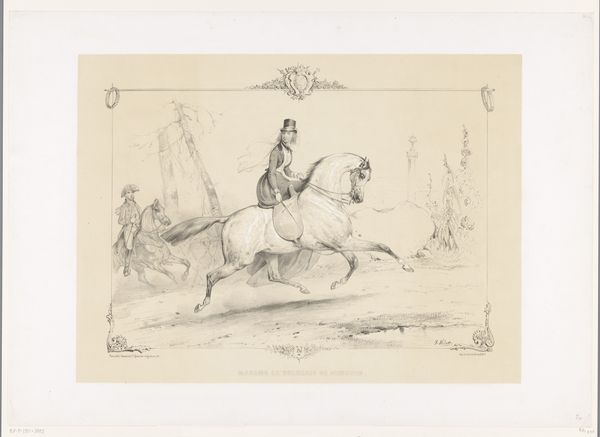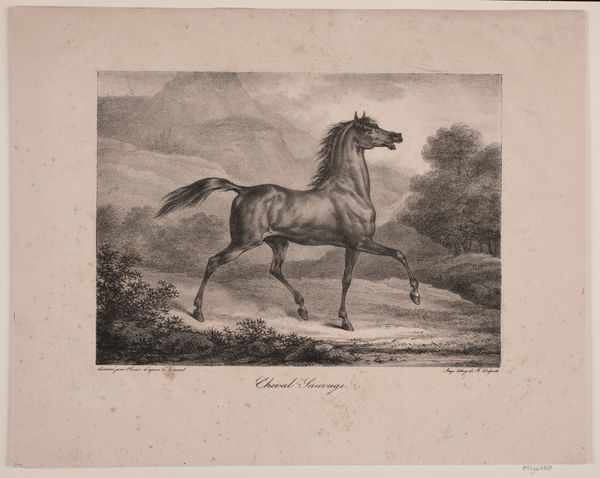
engraving
#
portrait
#
animal
#
genre-painting
#
engraving
#
realism
Dimensions: height 297 mm, width 354 mm
Copyright: Rijks Museum: Open Domain
Curator: This engraving, made in 1756 by Richard Houston, is entitled "Racepaard met jockey," or "Racehorse with Jockey," in the collection of the Rijksmuseum. Editor: It strikes me immediately as a portrait meant to showcase power. The horse is centrally located, taking up most of the composition, looking so proud and poised. It almost diminishes the boy beside it. Curator: Indeed. The purpose of such portraits was less about capturing a likeness and more about asserting status. Horse racing was a sport closely linked to the aristocracy in 18th-century England, therefore depictions of these racehorses would become status symbols. Notice the rather elaborate, ornamental frame Houston created for the composition. Editor: And isn't it interesting how this print participates in constructing ideals around masculinity? The delicate lines used in the engraving seem almost paradoxical when linked to a horse depicted as robust. The youthful figure almost seems like a fashion statement; a well-dressed ornament himself! Curator: The engraving medium also served a distinct social function at the time. Printed images could circulate widely, giving a larger audience access to these status symbols, however, still primarily accessible to a more privileged strata of society who had access to purchasing prints. Editor: That makes me think about how such imagery also perpetuated existing class structures. By representing an idealized version of ownership and the good life, these works solidified and normalized those power dynamics in society. Curator: The detailed naturalistic rendering aligns with an emerging interest in the scientific classification of animals, connecting status symbols to enlightenment ideals. This artwork underscores that throughout history, seemingly benign artworks reinforce prevailing socio-economic hierarchies. Editor: Absolutely, art isn't neutral; it actively participates in shaping cultural values. Spotlighting such historical objects reveals how ingrained systems of power operate through cultural expression, which in turn asks us to interrogate similar contemporary trends.
Comments
No comments
Be the first to comment and join the conversation on the ultimate creative platform.
